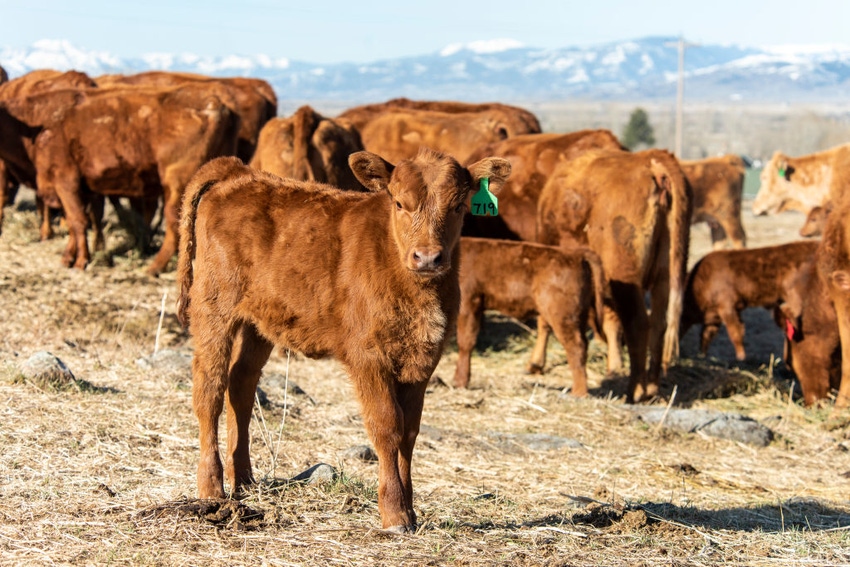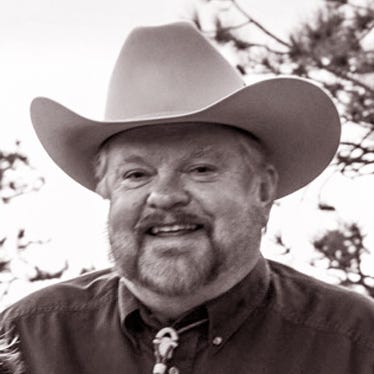Here’s some sound science to clear the air on cattle’s contribution to air quality.
October 22, 2020

Many first heard of Frank Mitloehner when he exposed and invalidated the UN’s “Livestock Long Shadow” report and forced its withdrawal of wildly exaggerated cattle greenhouse gas emissions (GHG).
Mitloehner is in the animal science department and is an air quality specialist at UC-Davis. He is not only eminently qualified to examine the nitty gritty of livestock and their environmental impact, his classes in California give him constant exposure to the thinking of younger generations regarding climate change and cattle.
Mitloehner has been chair of the UN-Food & Agriculture Organization panel to benchmark the environmental impact of livestock production and a similar National Academy of Science, Engineering & Medicine panel.
The science and commentary he shared with the Texas Cattle Feeders Association convention via the internet was astonishing, thorough and mostly all great news for cattlemen. And it is his fervent wish that we learn it and spread the news far and wide.
The Livestock’s Long Shadow report erroneously reported that livestock production on the planet had a bigger environmental footprint (18%) than transportation. That one erroneous claim spawned increased interest in attacking cattle production and has been quoted by most of the fake meat companies to raise interest and investment capital.
The interest is so high, Mitloehner said, that his social media accounts draw three million hits per month, especially from young people wanting to save the planet.
Changing the narrative
Now he believes it is time to change the common but false narrative about beef production and climate change. The critics point to cattle’s production of methane as the problem.
Mitloehner says the new narrative is “The Path to Climate Neutrality.”
He set the stage, listing all the global GHG emissions: 11% comes from U.S. fossil fuel combustion emissions; 0.6% from U.S. agricultural plants; 0.5% from U.S. animal ag; and 88% from all other U.S. and global GHG emissions. Total U.S. emissions: 12% of global emissions.
So American livestock production is not a major contributor to GHG emissions.
“The only reason it is important is because our customers make it important,” Mitloehner said. Whether we believe it is important in one thing. But when McDonald’s or Burger King or Sam’s Club make it important, we need to discuss it. When they say they want beef delivered with a lower carbon footprint, that’s important, he said.
Of that 12% of global emissions by the U.S., three sources account for nearly 80%: transportation, 28%; electricity generation, 28%; and industry, 22 %. Only 9% comes from agriculture, of which 4% is livestock.
Of the GHG produced, 82% is carbon dioxide (CO2) and 10% is methane (CH4), according to EPA data. But importantly, agriculture and forestry are actually sinks, meaning they actually pull GHG (CO2) out of the atmosphere, called sequestration.
There is a measure called Global Warming Potential (GWP) that is assigned to various gases. CO2 is assigned an index value of 1, methane (CH4) value of 28 and nitrous oxide a value of 265. The critics and the media get this far and usually stop.
More to the story
But there is much more to the story. They know cattle as a source of methane and figure it is 28 times as potent as CO2. In truth, GWP does not apply the same way to methane as it does to CO2.
That’s because, while CO2 lasts in the atmosphere for 1,000 years, methane actually recycles in 10 years and nets almost no increase in GHG. Nearly all global methane is oxidized in the atmosphere, with the rest sequestered in soil and roots.
Global methane sources in million tons per year: fossil fuels, 105; agriculture and waste,188; biomass burning, 34; wetlands, 167; and other natural sources, 64. Those total 558 million tons of CH4 per year. Sinks are 515 million tons per year from oxidation and 33 million tons per year in soil, for total of 548 million tons per year, nearly cancelling out.
Now, there is another “miracle” that cattle pull off besides turning grass into high quality beef. They are the link that comes after the Biogenic Carbon Cycle, Mitloehner explained.
Photosynthesis takes sunlight, water and CO2 to create grass. The carbon from atmospheric CO2 is what plants use to make carbohydrates like cellulose and starches. Cellulose is the world’s most abundant biomass.
In the cow’s carbon cycle, all the carbon in the cow, the cow’s breath and belches comes from the air. The cow “upcycles” cellulose (carbon) to make meat and milk for humans. The cow or other ruminant actually reduces atmospheric CO2 .
Some methane escapes in the process, but in 10 years it is oxidized in the atmosphere and is almost a net zero. If the cow herd stays the same size, there is no methane addition to the atmosphere.
Now consider fossil fuels
The process is very different for the emissions from fossil fuels, which are additive to the atmosphere.
Mitloehner also noted that we produce the same amount of beef from 95 million total cattle and calves now as 130 million in 1976. That means we’re producing much less methane now than 45 years ago.
Dairy cow numbers peaked in the 1960s at 25 million head and now produce 16% more milk with only 9 million head. He also wryly noted that no one mentions the 117 million dogs and cats and their environmental impact because they are our “friends.”
Mitloehner emphasized the importance of people realizing methane is a “flow” gas that is destroyed at the same rate as it is created, with a 10-year time lag. It does not behave like CO2, which stays in the atmosphere and does not break down.
Regardless of that, California passed 2015 laws requiring a 40% reduction in methane by 2025. The ag industry has already reduced it by 25% through mitigation methods. Dairies have covered lagoons to trap biogas and convert it to fuel. The state appropriated $500 million to help agriculture pay for the necessary systems.
Mitloehner went global again, highlighting the population vs. agricultural land challenge shaping up. World population is projected to hit 10 billion by 2050, with 8.3 billion more of the total coming from the developing countries with the worst food security outlook. The poorer countries of Asia (not China), Bangladesh, Indonesia, India and Africa will make up most of the increase.
Only 25% of the world’s surface is land. Mitloehner takes an 8.5 X 1 inch sheet of paper, folds it twice. That fourth is the total land mass.
Then he takes a business card, and that represents the total agricultural land. One-third of that business card is crop land and two-thirds of it is suitable only for ruminants to harvest. That such a little portion of the world’s land can be cropped to feed the world usually convinces skeptics that we cannot feed the world with a 1950s approach, he said.
The most efficient production methods produce fewer emissions per ton of food, he noted.
That’s the basics.
“We must stop caving to the extremists,” Mitloehner said. We can’t argue with the activists but we have to get the correct information out to everyone else. Farmers and ranchers in their own communities must speak up.
For more of Mitloehner’s information: clear.ucdavis.edu/blog; @GHFGuru, @UCDavisClear; [email protected]
Dittmer is a longtime beef industry commentator and executive vice president of the Agribusiness Freedom Foundation. The opinions of the author are not necessarily those of beefmagazine.com or Farm Progress.
About the Author(s)
You May Also Like





